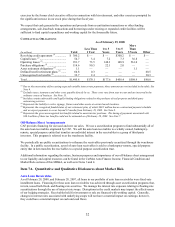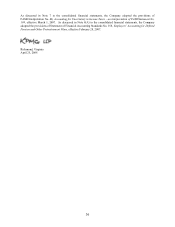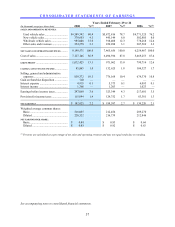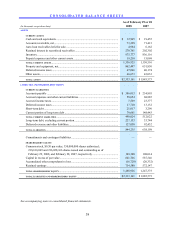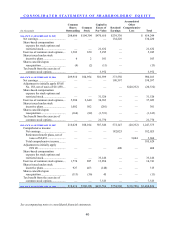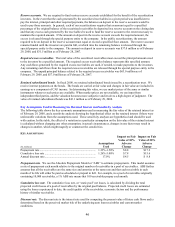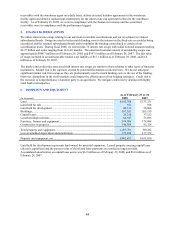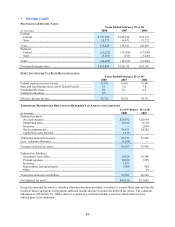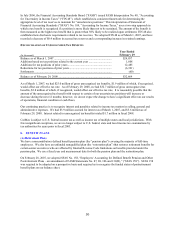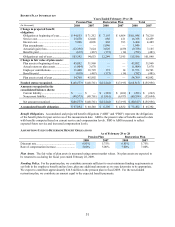CarMax 2008 Annual Report Download - page 54
Download and view the complete annual report
Please find page 54 of the 2008 CarMax annual report below. You can navigate through the pages in the report by either clicking on the pages listed below, or by using the keyword search tool below to find specific information within the annual report.
42
(F) Inventory
Inventory is primarily comprised of vehicles held for sale or currently undergoing reconditioning and is stated at the
lower of cost or market. Vehicle inventory cost is determined by specific identification. Parts and labor used to
recondition vehicles, as well as transportation and other incremental expenses associated with acquiring and
reconditioning vehicles, are included in inventory. Certain manufacturer incentives and rebates for new car
inventory, including holdbacks, are recognized as a reduction to new car inventory when we purchase the vehicles.
We recognize volume-based incentives as a reduction to cost of sales when we determine the achievement of
qualifying sales volumes is probable.
(G) Property and Equipment
Property and equipment is stated at cost less accumulated depreciation and amortization. Depreciation and
amortization are calculated using the straight-line method over the shorter of the asset's estimated useful life or the
lease term, if applicable. Property held under capital lease is stated at the lesser of the present value of the future
minimum lease payments at the inception of the lease or fair value. Amortization of capital lease assets is computed
on a straight-line basis over the shorter of the initial lease term or the estimated useful life of the asset and is
included in depreciation expense. Costs incurred during new store construction are capitalized as construction-in-
progress and reclassified to the appropriate fixed asset categories when the store opens.
ESTIMATED USEFUL LIVES
Life
Buildings.......................................................................................................................................... 25 – 40 years
Capital leases ................................................................................................................................... 15 – 20 years
Leasehold improvements ................................................................................................................. 8 – 15 years
Furniture, fixtures and equipment.................................................................................................... 5 – 15 years
We review long-lived assets for impairment when circumstances indicate the carrying amount of an asset may not be
recoverable. We recognize impairment when the sum of undiscounted estimated future cash flows expected to result
from the use of the asset is less than the carrying value of the asset.
(H) Other Assets
Computer Software Costs
We capitalize external direct costs of materials and services used in and payroll and related costs for employees
directly involved in the development of internal-use software. We amortize amounts capitalized on a straight-line
basis over five years.
Goodwill and Intangible Assets
We review goodwill and intangible assets for impairment annually or when circumstances indicate the carrying
amount may not be recoverable.
Restricted Investments
Restricted investments primarily consist of money market and other debt securities associated with certain insurance
programs. Due to the short-term nature and/or variable rates associated with these financial instruments, the
carrying value approximates fair value.
(I) Defined Benefit Plan Obligations
The recognized funded status of defined benefit retirement plan obligations is included both in accrued expenses and
other current liabilities and in deferred revenue and other liabilities. The current portion represents benefits
expected to be paid from our benefit restoration plan over the next 12 months. The defined benefit retirement plan
obligations are determined by independent actuaries using a number of assumptions provided by the company. Key
assumptions used in measuring the plan obligations include the discount rate, expected rate of return on plan assets,
rate of compensation increases and mortality rate.
(J) Insurance Liabilities
Insurance liabilities are included in accrued expenses and other current liabilities. We use a combination of
insurance and self-insurance for a number of risks including workers' compensation, general liability and employee-
related health care costs, a portion of which is paid by associates. Estimated insurance liabilities are determined by
considering historical claims experience, demographic factors and other actuarial assumptions.


